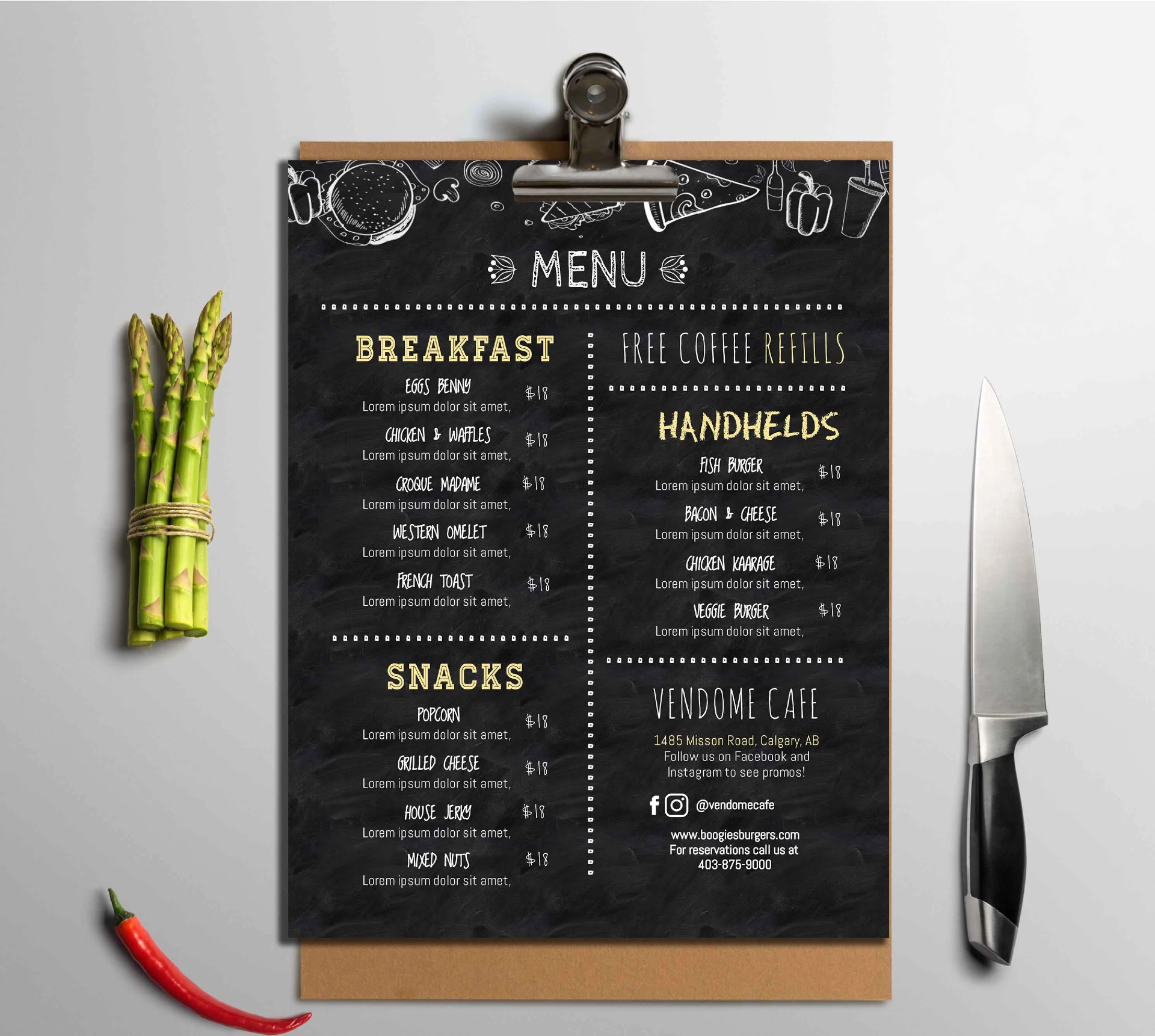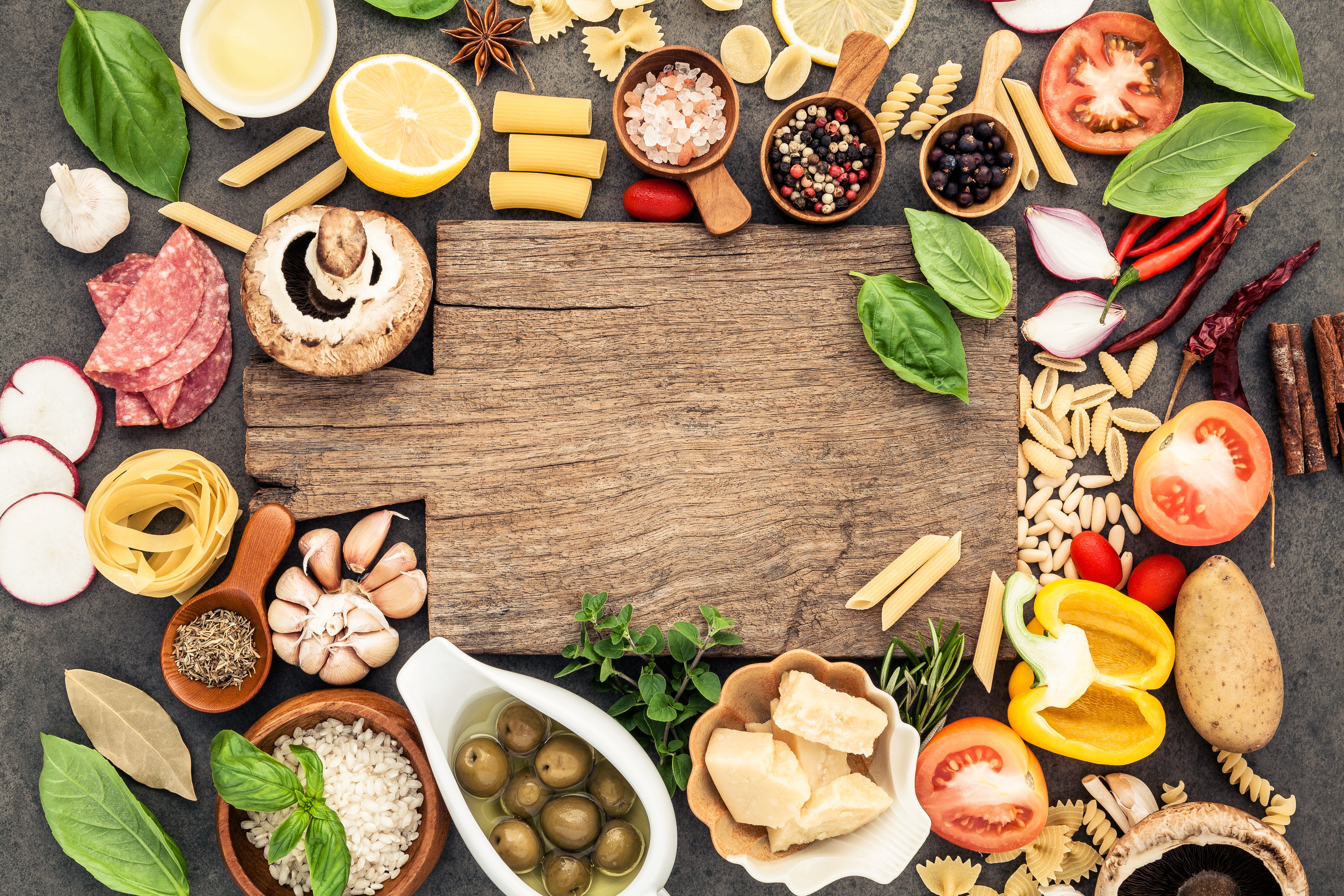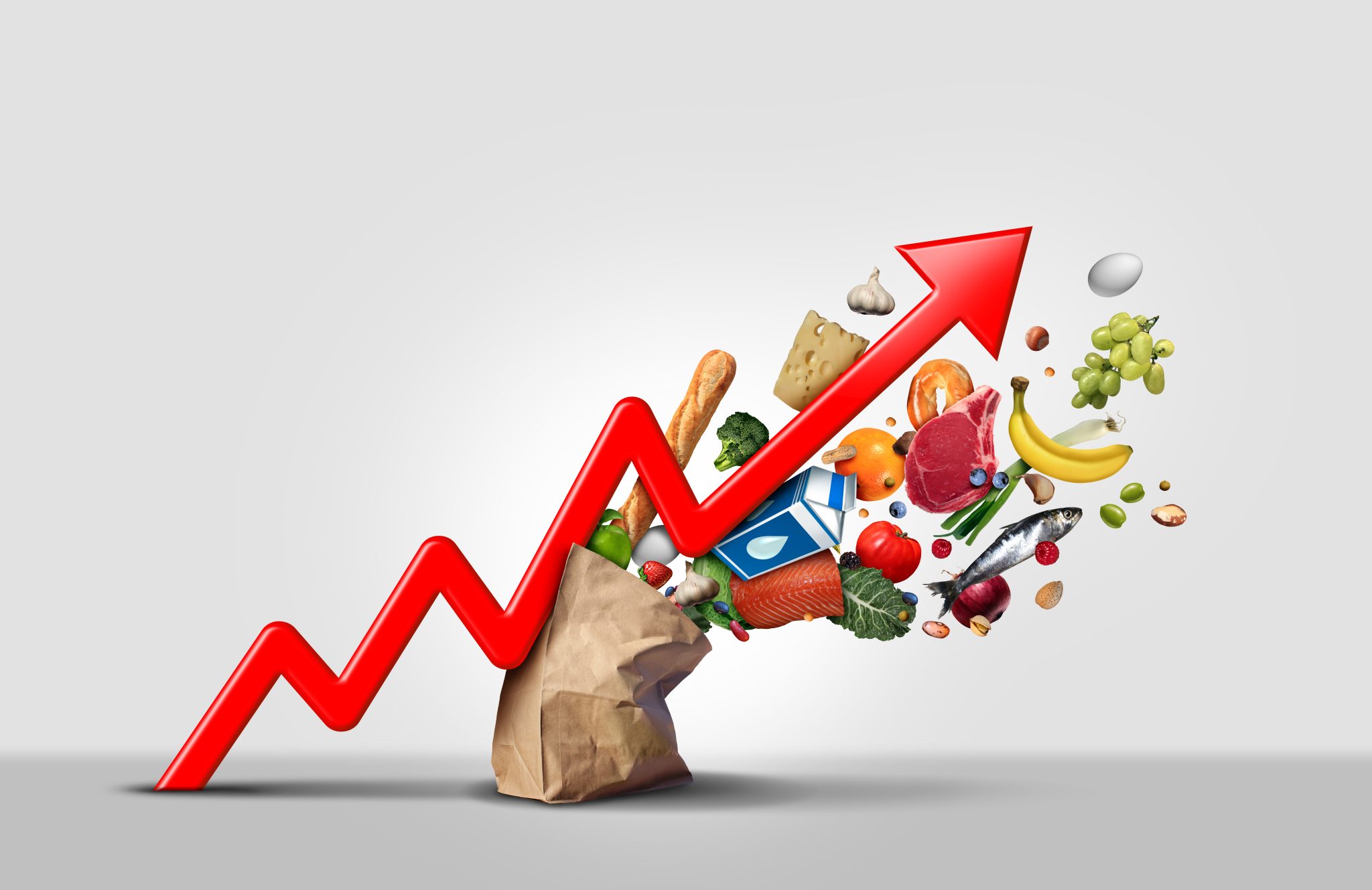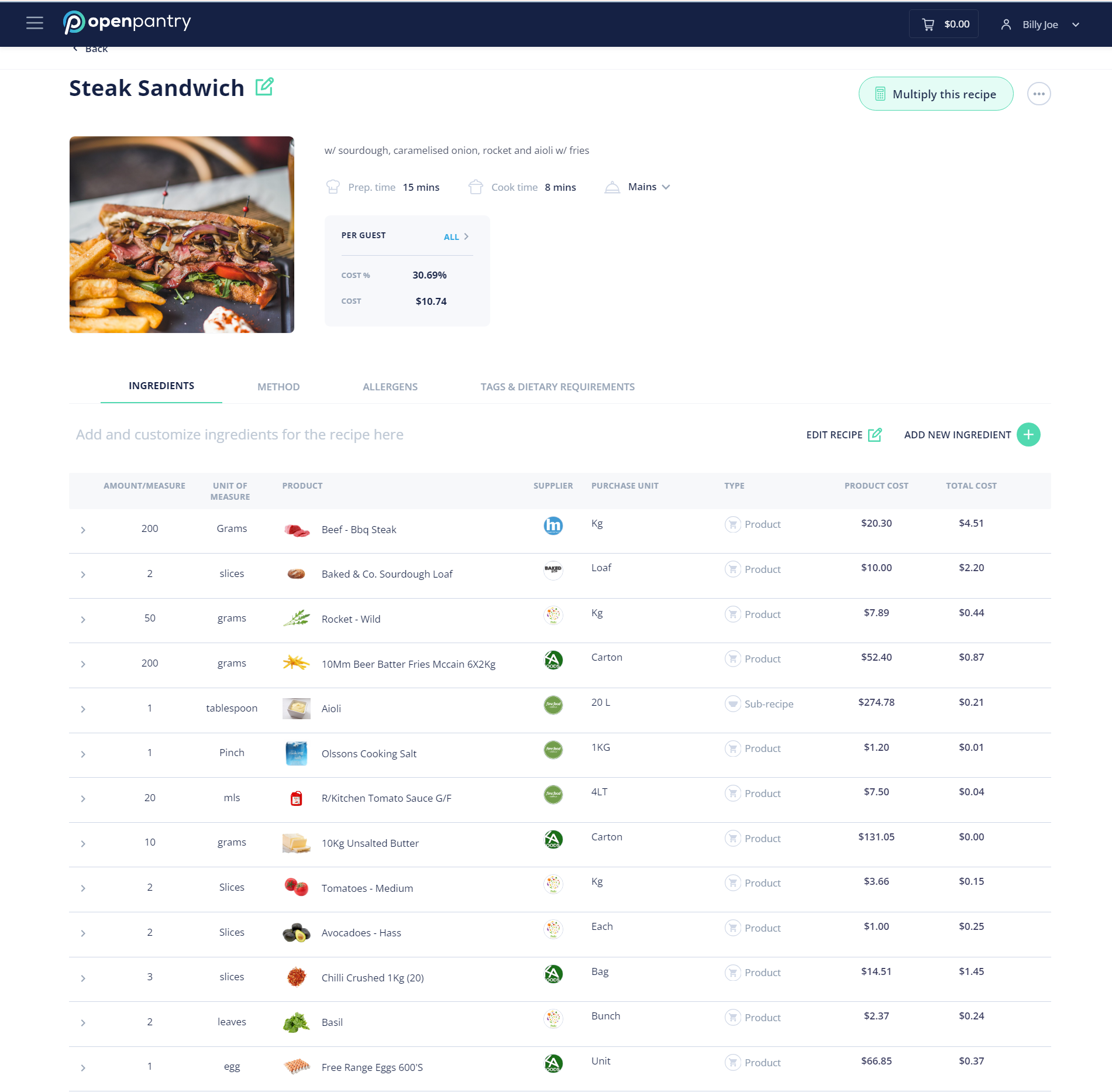How to Cost a Menu: A Step-by-Step Guide for Restaurant Owners

Costing a menu accurately is essential for any restaurant aiming to be profitable. A well-costed menu helps in setting the right prices, maintaining a balance between cost and quality, and ensuring financial health. Furthermore, it provides valuable insights for making informed decisions about menu design, optimising ingredient use, and enhancing overall operational efficiency. This careful analysis also allows restaurants to adjust pricing strategies in response to market trends and fluctuations in ingredient costs, ultimately supporting long-term success and stability.
Utilising advanced tools like Open Pantry's Restaurant Pro Suite can significantly simplify and enhance this process. Open Pantry offers comprehensive features for inventory management, automated ordering, and real-time cost analysis, making it easier for you to maintain profitability while delivering quality to your customers.
Here’s a straightforward guide to help you through the process.
1. List All Ingredients
Detail Every Ingredient: Begin by cataloguing every ingredient used in each dish. This includes not just the main components but also any spices, oils, garnishes, and minor additives. Each ingredient, no matter how small, can impact the overall cost, so thorough documentation is essential.
Calculate Costs: Determine the cost of each ingredient based on your purchase price and the quantity used in the dish. An accurate cost calculation ensures that you’re capturing the true expense of each dish.
Example:
- Flour costs $2 per kilogram, and you use 0.1 kilogram in a dish. The cost for flour in that dish is $0.20.

2. Standardise Portions
Consistent Portions: To ensure accuracy and customer satisfaction, each dish must have a standardised portion size. This consistency not only helps in managing inventory but also ensures that each dish’s cost is calculated uniformly.
Calculate Portion Costs: Multiply the quantity of each ingredient used by its unit cost to find the total ingredient cost for each dish.
Example:
- Chicken Breast: $3 per piece
- Flour: $0.20 per portion
- Spices: $0.10 per portion
- Total Ingredient Cost per Dish: $3.30
3. Include Overhead Costs
Overhead costs, also called operating expenses, are all the ongoing business expenses required to run your business that are not directly involved with creating your product or service. This includes rent, utilities, office supplies, and administrative expenses.
Allocate Overhead Costs: Divide your total monthly overhead by the number of dishes you expect to sell. This gives you the overhead cost per dish.
Example:
- Monthly Overhead: $10,000
- Expected Dishes Sold per Month: 2,000
- Overhead Cost per Dish: $5
4. Account for Labour Costs
Labour cost describes the amount of money an organisation spends on each employee, including wages, benefits, and taxes. Accurately calculating labour costs is crucial, as it reflects the financial impact of your team’s time spent preparing each dish.
Calculate Labour: Consider the time taken to prepare each dish and the hourly wage of your staff.
Example:
- Prep Time: 15 minutes (0.25 hours)
- Hourly Wage: $15
- Labour Cost per Dish: $3.75
5. Determine Your Profit Margin

Set Your Profit Margin: Decide on a profit margin that reflects your financial goals, typically between 20% and 40%. This margin should cover your costs and contribute to your overall profitability.
6. Calculate the Selling Price
The actual selling price is the price the buyer pays to buy a product or service.
Selling Price = Cost of Ingredients / (1- Desired Profit Margin)
Example:
- Total Cost per Dish: $12.05 ($3.30 + $5 + $3.75)
- Desired Profit Margin: 30%
- Selling Price: $12.05 / (1 - 0.30) = $17.21
Related article: How to Calculate Menu Costing
7. Adjust for Market Competitiveness
Compare Prices: Conduct a thorough analysis of the pricing strategies used by similar restaurants in your area. Look at their menu prices, portion sizes, ingredient quality, and overall dining experience. This helps ensure your prices are competitive, attracting new customers while retaining existing ones.
Adjust Accordingly: If your prices are significantly higher or lower than those of your competitors, make strategic adjustments. Consider changing portion sizes, finding more cost-effective ingredients, or optimising overhead costs. Offering special deals or bundles can also provide better value and entice customers. The goal is to maintain profitability while staying attractive to your target market.

8. Monitor and Update Regularly
Track Changes: Regularly review and adjust for fluctuations in ingredient costs and overhead expenses. This ongoing monitoring helps you stay aligned with market conditions and financial goals. Utilise software tools and accounting systems to keep track of these changes efficiently. By staying proactive, you can anticipate cost increases and make necessary adjustments before they impact your bottom line.
Update Prices: Modify your menu prices as needed to reflect changes in costs and maintain your desired profit margins. Ensure that any price changes are communicated clearly to your customers, possibly by highlighting the value and quality of your offerings. Regularly updating your menu prices helps balance profitability while staying competitive in the market. Conduct periodic reviews to assess the impact of price changes and make further adjustments as required.
9. Factor in Seasonal Variations
Seasonal Ingredients: Ingredient costs can vary with the seasons. Utilise seasonal produce to take advantage of lower prices and offer seasonal dishes that appeal to customers. This not only reduces costs but also keeps your menu fresh and exciting, attracting customers who are interested in seasonal specialties.
10. Minimise Waste
Track Waste: Implement systems to monitor and reduce food waste. Efficient inventory management and portion control can help minimise waste and lower costs. Utilise tools and technologies like Open Pantry’s Pro Suite to track waste, identify patterns, and make necessary adjustments to your purchasing and preparation processes.
11. Use Technology

Leverage Software Tools: Utilise restaurant management software like Open Pantry's Restaurant Pro Suite to streamline and automate the costing process. Open Pantry's powerful tools include menu costing and inventory management tools that reduce errors and simplify cost tracking. Open Pantry’s wholesale online ordering system minimises mistakes and improves efficiency, helping you manage costs effectively and focus on delivering quality to your customers.
Costing a menu involves careful calculation and regular monitoring. By listing all ingredients, standardising portions, including overhead and labour costs, and setting a strategic profit margin, you can ensure your restaurant remains profitable. Stay competitive and responsive to market changes by regularly updating your costs and prices. To simplify this process, use our free Food Cost Calculator to get started.
Open Pantry simplifies the pricing process and helps you maintain profitability. Revolutionise your menu management and enhance your restaurant’s financial health today!